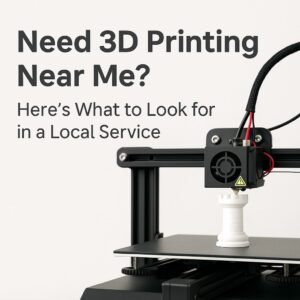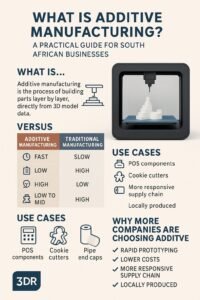
3D Printing Near Me
Need 3D Printing Near Me? Here’s What to Look for in a Local Service Searching for “3D printing near me”? You’re not alone. Whether you’re
3D printing is a rapidly growing technology with a wide range of applications. There are many different 3D printing technologies available, each with its own advantages and disadvantages. Choosing the right 3D printing technology for your project can be a challenge, but it is important to do your research to ensure that you choose the right technology for your needs.
3D printing is a process of creating three-dimensional objects from a digital file. The process involves melting or solidifying a material layer by layer until the object is complete. 3D printing can be used to create a wide variety of objects, including prototypes, models, and end-use parts.
There are many different 3D printing technologies available, each with its own advantages and disadvantages. The most common 3D printing technologies include:
FDM is the most popular 3D printing technology. It is a relatively inexpensive and easy-to-use technology. FDM printers use a heated nozzle to melt a thermoplastic filament, which is then deposited layer by layer to create the object.
Fused deposition modeling (FDM) is a good choice for creating prototypes, models, and end-use parts. It is a relatively inexpensive and easy-to-use technology, making it a good option for hobbyists and small businesses. FDM printers can use a variety of materials, including PLA, ABS, and nylon.
Here are some examples of where you would use FDM 3D printing:
SLA is a more advanced 3D printing technology than FDM. It is a more precise and accurate technology, but it is also more expensive. SLA printers use a laser to cure a liquid resin layer by layer to create the object.
Stereolithography (SLA) is a more advanced 3D printing technology than FDM. It is more precise and accurate, making it a good choice for creating high-quality models and prototypes. SLA printers use a laser to cure a liquid resin layer by layer to create the object.
Here are some examples of where you would use SLA 3D printing:
SLS is a similar technology to SLA, but it uses a laser to sinter a powdered material layer by layer to create the object. SLS is a more advanced technology than SLA, and it is even more precise and accurate. However, SLS printers are also more expensive than SLA printers.
Selective laser sintering (SLS) is a similar technology to SLA, but it uses a laser to sinter a powdered material layer by layer to create the object. SLS is a more advanced technology than SLA, and it is even more precise and accurate. However, SLS printers are also more expensive than SLA printers.
Here are some examples of where you would use SLS 3D printing:
There are many factors to consider when choosing a 3D printing technology for your project. These factors include:
Once you have considered the factors above, you can start to narrow down your choices for 3D printing technologies. Here are some tips for choosing the right 3D printing technology for your project:
Choosing the right 3D printing technology for your project can be a challenge, but it is important to do your research to ensure that you choose the right technology for your needs. By considering the factors above, you can narrow down your choices and choose the best 3D printing technology for your project.
I hope this blog post has been helpful!

Need 3D Printing Near Me? Here’s What to Look for in a Local Service Searching for “3D printing near me”? You’re not alone. Whether you’re

Additive Manufacturing? Additive manufacturing, often referred to as industrial 3D printing, is no longer a niche prototyping tool — it’s a serious production method that’s
